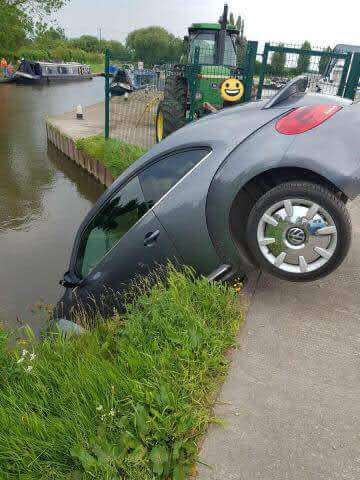I’m not sure it will, an electronic handbrake is exactly the same as a manual one ie a mechanical braking system as opposed to a hydraulic one, operated (usually) on the rear wheels. It’s normally an electronic servo on the hand brake mechanism instead of a manually operated lever pulling cables to engage it.
EPB’s are normally electrically operated motorised calipers on the rear wheels. I’m not aware of anything operated on front wheels although it’s always possible that some exotic or off road special may have the 4 wheel facility.
Have a look here S90_OwnersManual_MY20_en-GB_TP31295.pdf (msecnd.net) Page 431.
This is an extract:
‘If the car is stationary when the parking brake
is activated, it only acts on the rear wheels. If
it is activated when the car is moving then the
normal foot brake is used, i.e. the brake acts
on all four wheels. Brake function changes
over to the rear wheels when the car is almost
stationary.’
Most modern cars including the ND have the ability to apply the brakes in any way the ‘computer’ wishes. Mr Roddison can testify to that, his video at Donnington was a shocker.
I suspect that other manufacturers will work as the Volvo, the consequences of applying the rear brakes at 70mph on a wet road would be ‘interesting’ to say the least!!!

That manual illustrates exactly why I avoid cars with an electric parking brake!
Nightmare.
Having said all that about electric brakes. A colleague at work owns a vehicle that has one. Four years ago (when the world was not upside down) he went to one of our customers in Filton for a meeting and used the company pool car. The said pool car has a manual brake. The car park at our customer premices had a slight incline. Not much… but enough for a car to roll off the carpark and end up in a ditch.
Yea it was a bit funny for some time… (still is tbf) 
Actually saw this down at our local canal. Owners parked up and forgot to apply the handbrake.

Thanks Malc - every days a learning day  .
.
I guess if the car is moving above a certain speed the handbrake switch tells the abs actuator / system to emergency brake on all four wheels using the usual hydraulic systems, until the car has slowed to a certain point when the mechanical actuator (usually on the rear wheels only) operates.
Iirc it used to be mandatory for vehicles to have 2 independent brake systems (ie 1 x hydraulic and 1 x mechanical) so it would always be possible to stop in the event of failure of the primary system.
I think it was BMW / Bosch who pioneered individual wheel braking, about 25 years ago, and it uses individual wheel rotation speed, steering angle, gear, throttle position, inertial and yaw sensors plus no doubt many other inputs to try and second guess what the driver is trying to do, then applies varying brake pressure to individual wheels to help achieve it.
It was most noticeable in a new MINI I had in 2003, as I could here the abs pump working when I wasn’t braking (that car was almost uncrashable when cornering at speed in the wet - great fun) and every BM I’ve had since has used the same system, although it’s a lot less obvious when it’s doing it’s stuff now.
My big sports bikes (c200bhp) bikes would be pretty much unrideable (well, for me anyway) without a lot of electronic intervention going on in the background, and they use similar IMU’s I believe.
Bet they did that on purpose after realising how bad that car was!